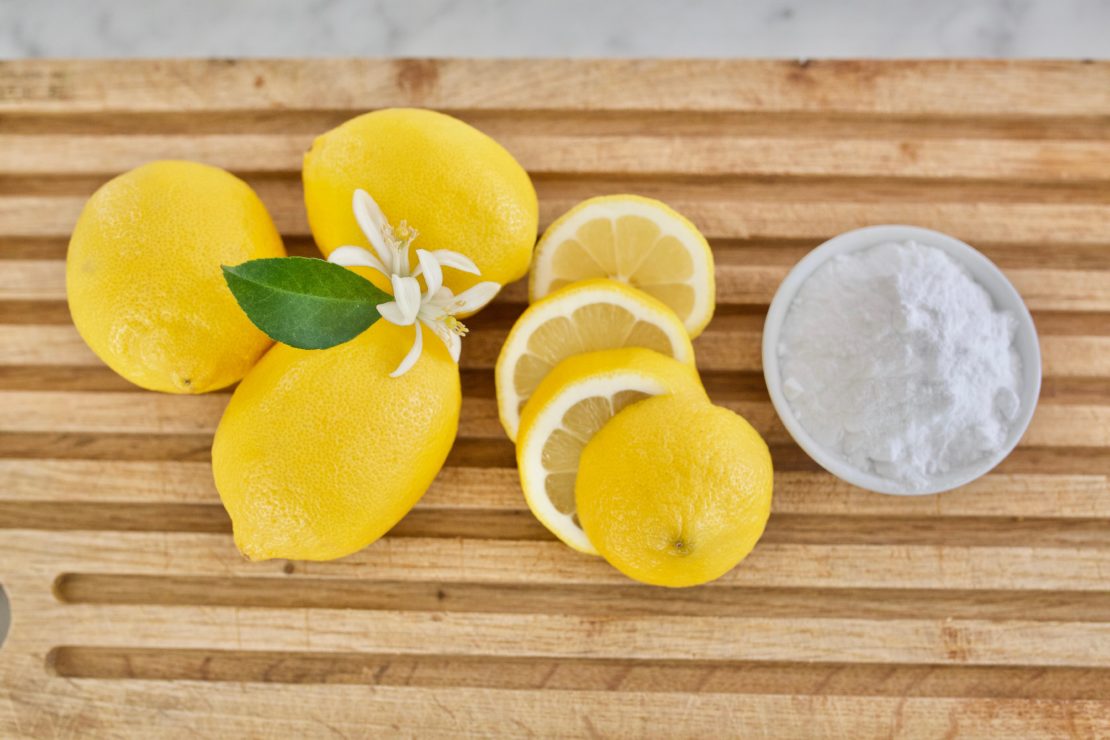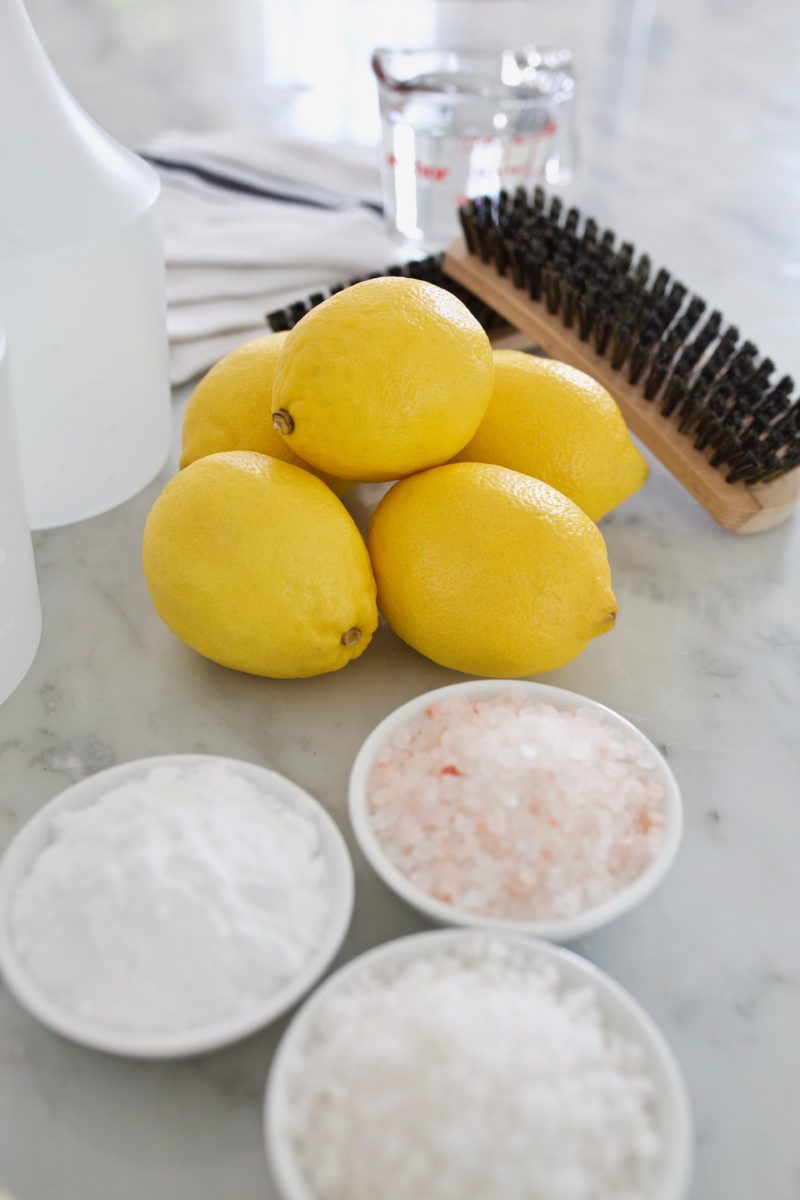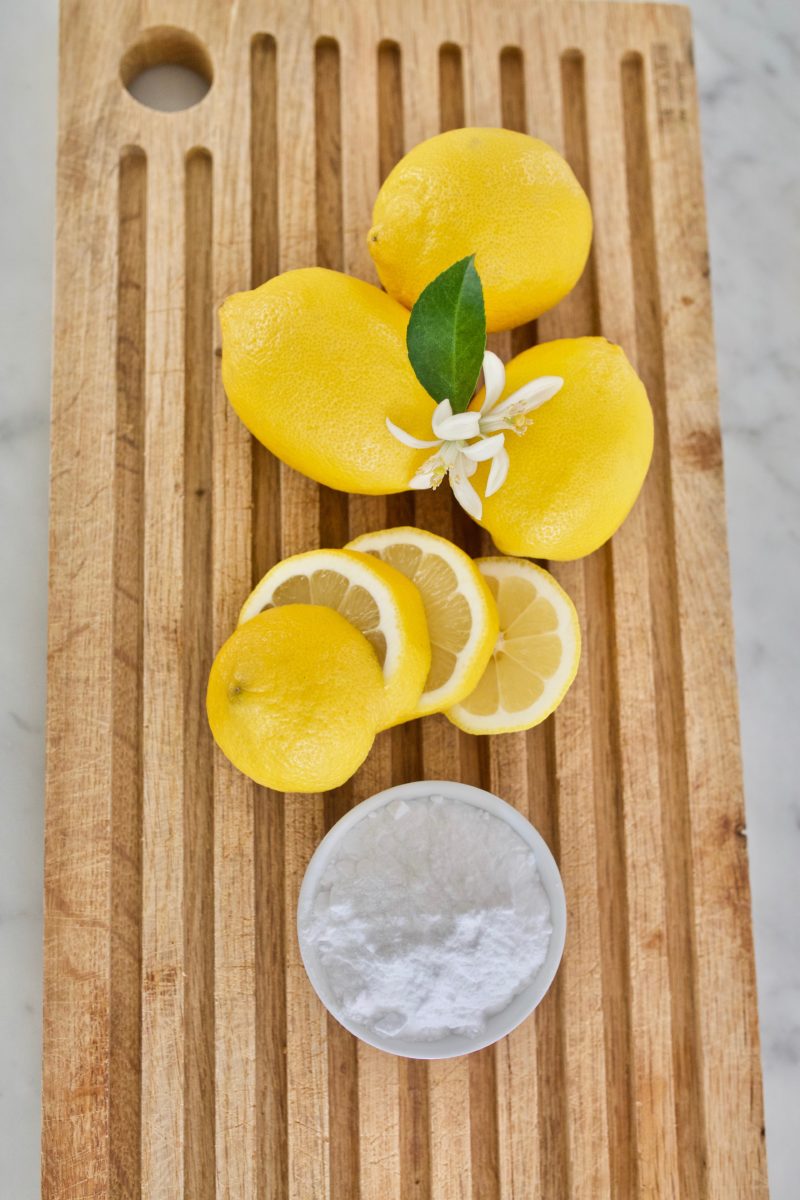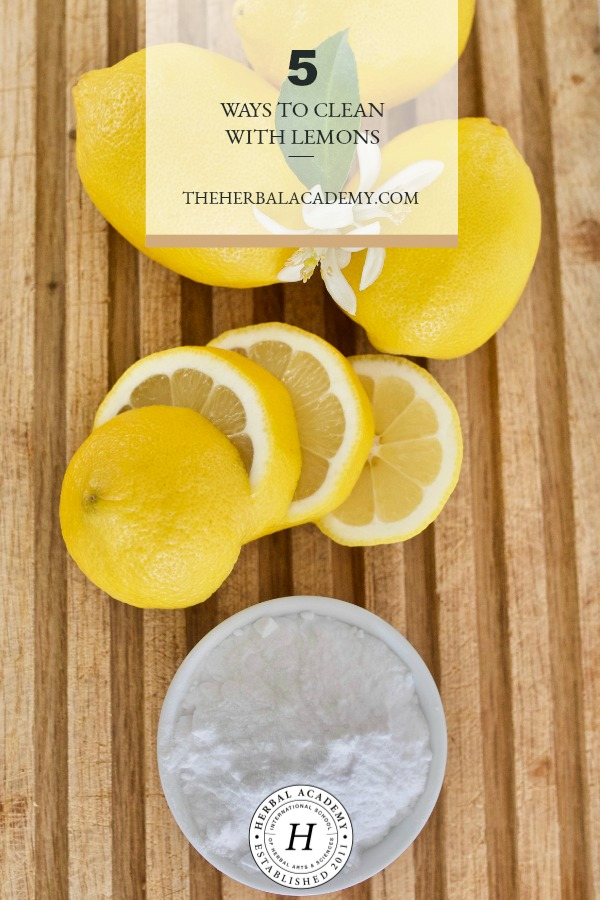
5 Ways to Clean with Lemons
I crave the feelings of satisfaction and coziness that comes after giving my home a thorough cleaning. When the carpets look lush, the floors are shiny, and everything’s in its place, I feel peaceful and calm!
And the best part? When I’ve cleaned my home the green way, with safe, natural cleaners, those feelings of satisfaction are multiplied. It just feels good!
Unfortunately, for most of us, one of the biggest challenges to living a greener lifestyle is cleaning the home. Unbeknownst to the consumer, many popular household cleaners are dangerously toxic (EWG, n.d.a.). According to Environmental Working Group (EWG), a non-profit organization focused on environment and public health, there is no federal regulation of chemicals in household cleaners and the average household contains 62 known toxic chemicals (EWG, n.d.a.). With the thousands of cleaning supplies available to consumers, the thought of not having a safety standard is overwhelming. It’s therefore important to take the time to evaluate the ingredients in your cleaning products and make sure you’re comfortable with their safety ratings. EWG’s Guide to Healthy Cleaning is a database that allows you to do just that.
As you scroll through that database or scan the cleaning product aisle, you might notice that many cleaning products on the market include lemons on the labels. Well, there’s a reason for that! Citrus fruits like lemons are powerful cleaning tools. They break down grime, disinfect (Berthold-Bond, 1999), and smell amazingly fresh! Lemon can be a very effective cleaning agent that can add citrus power to natural cleaning products, and you may want to consider incorporating it into your own cleaning routine.
Why Clean with Lemons?
Whether you need to polish your faucets, clean your countertops, or brighten linens, lemons have you covered. They are an amazing, green cleaning agent that contain:
- Citric Acid – a mild acid that fights water spots, hard water stains, and bacteria (Berthold-Bond, 1999)
- Lemon Oil – a uplifting, sunny scent and antibacterial disinfectant (Siegel-Mailer, 2008)
- D-Limonene – a powerful degreaser and solvent (Berthold-Bond, 1999)
You can reap the benefits of lemon as a cleaner without harsh, unsafe chemicals found in many store-bought cleaners. Why not pick up a handful of lemons and add a twist to your cleaning routine? You can start with the following five money-saving, eco-friendly ways to clean with lemons.
How to Clean Your Home With Lemons

1. Detox Your Microwave
The microwave can get pretty gross, and while you could spend a chunk of time trying to clean it, you could also zap it clean with just few steps to dissolve food splatters without scrubbing. The combination of lemon and steam will degrease, loosen grime, and nix unpleasant odors.
- Pour ½ cup of water into a medium microwave-safe bowl. Slice one lemon in half and squeeze the juice into the bowl. Toss in the halves.
- Place the bowl inside the microwave and set the timer for three minutes to allow the water to boil.
- Let stand for five minutes before carefully removing the bowl. Wipe down the inside the microwave with a cloth, and voila! Sparkly clean.
2. Lemony Fresh Kitchen Sink
One would think the kitchen sink is relatively clean, considering the amount of time we spend cleaning other things in the sink. However, the moist environment and leftovers from cleaning all of those other things can create the conditions for bacterial growth—most notably in the drain or down the garbage disposal. Luckily, we can get the sink and its parts clean without harmful chemicals. Let’s start with the disposal!
2 cups ice Next, create a natural cleaning scrub by combining the lemon juice you reserved with baking soda to create a thick, wet paste. Use it with a bristle cleaning brush to clean the sink surface and around faucets where dirt and grime can build up.
1 cup baking soda The antibacterial properties of lemon juice make it a great cleaner for surfaces on which we prepare food. The lemon juice naturally cleans without leaving a chemical residue, and you never have to worry about contaminating food with harmful chemicals. Mineral oil, which is a common ingredient in wood cutting board cleaners, receives a “D” from the EWG for safety (EWG, n.d.b.). The technique below is a safe way to naturally clean, condition, and deodorize cutting boards made from wood.
Half of a lemon Lemon juice is an effective all-natural bleaching agent. It even works well on rust and sweat stains. The citric acid helps to bleach away stains and brighten fabric. (Avoid use on colorful fabrics as it may cause discoloration). Use the tips below to effectively remove stains and brighten fabrics with lemon.
With all the foods we stuff into our refrigerator (and sometimes forget), it can gain some unpleasant odors. Lemon can help deodorize the refrigerator in no time at all. Start by tossing out or composting old foods and set the rest aside. Then use the Citrus Surface Cleaner below to naturally clean surfaces. Towel-dry the surfaces before returning the contents to the refrigerator. Then, pour 1 cup of baking soda into a small bowl. Add 8 drops of lemon essential oil and place it on a shelf or in the door of your refrigerator uncovered. It gives a fresh breeze of lemon scent every time you open it!
3 ounces distilled water That’s right! All it takes to give your cleaning a boost is a handful of lemons. Clean your home and say goodbye to harsh chemicals and hello to green cleaning. This common citrus fruit is a versatile solution to cleaning many areas of the home. So, grab a few lemons on your next trip to the market and get started with these 5 effective ways to clean with lemon. Find more green recipes for the home in the Beginners Guide to Natural Living Book.
REFERENCES
Berthold-Bond, A. (1999). Better basics for the home: Simple solutions for less toxic living. New York City, NY: Three Rivers Press.
Environmental Working Group. (n.d.a.). Household Cleaner Ratings and Ingredients. Retrieved from https://www.ewg.org/guides/cleaners/content/findings#.Wk6WKjdG1PY
Environmental Working Group. (n.d.b.) Guide to Healthy Cleaning: Mineral Oil. Retrieved from https://www.ewg.org/guides/substances/3634-MINERALOIL#.Wk64mzdG1PY
Siegel-Mailer, K. (2008). The naturally clean home. North Adams, MA: Storey Publishing.
Refresh the Garbage Disposal
1 cup sea salt
1 lemon

Sink Scrubbing Paste
5 drops lemon essential oil (Citrus limon) or 2 teaspoons of fresh lemon juice
1 teaspoon liquid castile soap
3. Clean Cutting Boards with Lemon and Salt

Cutting Board Cleanser
2 tablespoons coarse salt
4. Brighten Fabrics and Remove Stains
5. Deodorize Your Refrigerator
Citrus Surface Cleaner
3 ounces distilled white vinegar
4 drops lemon essential oil (Citrus limon)
4 drops lime essential oil (Citrus aurantifolia)
1 lemon or lime peel, optional
1 – 8-ounce glass spray bottle
Grab a Few Lemons and Get Cleaning!









